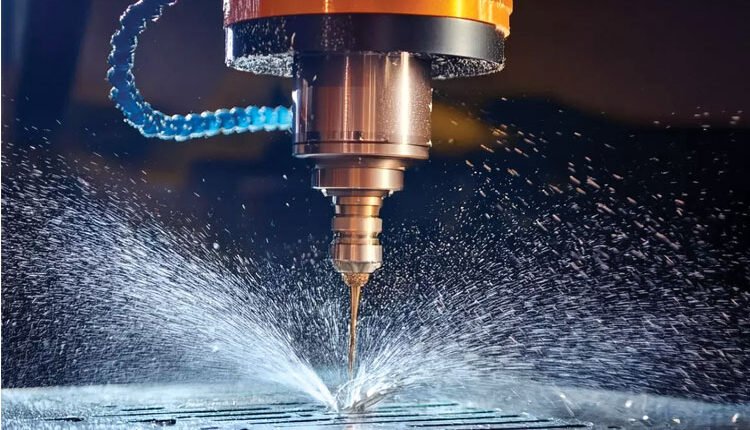Metal cutting fluids are indispensable in machining processes, ensuring smoother operations, longer tool life, and superior surface finishes. Over the years, advancements in cutting fluids have evolved to address industry challenges, including environmental concerns, efficiency demands, and advancements in machining technologies. This article delves into the latest developments in metal cutting fluids, exploring innovations in formulation, application techniques, and sustainable practices.
The Role of Metal Cutting Fluids
Metal cutting fluids play a critical role in cooling and lubricating the cutting interface, reducing friction, minimizing thermal deformation, and flushing away chips. Traditionally, cutting fluids were predominantly petroleum-based; however, the evolving needs of the machining industry have driven innovations toward high-performance, sustainable solutions.
Key Drivers of Innovation
Several factors are fueling advancements in metal cutting fluids:
- Environmental Regulations: Stricter environmental norms and concerns about hazardous waste have driven manufacturers to develop eco-friendly cutting fluids.
- High-Performance Materials: The rise of hard-to-machine materials like titanium and Inconel requires cutting fluids with enhanced properties.
- Precision Machining: Modern machining demands cutting fluids that can ensure dimensional accuracy and superior finishes.
- Cost Efficiency: Industries are seeking fluids that reduce operational costs through extended tool life and reduced consumption.
Innovations in Cutting Fluid Formulations
a) Bio-Based Cutting Fluids
Bio-based cutting fluids derived from renewable sources, such as vegetable oils, have gained popularity. These fluids offer excellent lubrication, reduced environmental impact, and biodegradability. For example, esters from vegetable oils are now being formulated for high-pressure machining applications.
b) Synthetic and Semi-Synthetic Fluids
Synthetic and semi-synthetic fluids combine the benefits of traditional oils and water-based coolants. Their superior heat dissipation, lower residue formation, and extended shelf life make them a preferred choice for high-speed machining processes.
c) Nano-Enhanced Cutting Fluids
Nanotechnology has paved the way for cutting fluids enriched with nanoparticles such as boron nitride, graphene, and molybdenum disulfide. These additives enhance thermal conductivity, reduce friction, and improve lubrication properties, significantly enhancing machining performance.
d) Antimicrobial Additives
To combat microbial growth in water-miscible cutting fluids, innovative antimicrobial additives are being developed. These solutions extend fluid life, maintain performance consistency, and reduce health risks to workers.
Application Techniques: Enhancing Fluid Efficiency
a) Minimum Quantity Lubrication (MQL)
MQL involves applying cutting fluids in minimal quantities directly to the cutting zone. This technique reduces fluid wastage, lowers disposal costs, and improves machining efficiency. MQL is particularly effective for processes like milling and drilling.
b) Cryogenic Cooling
Cryogenic cooling uses liquefied gases, such as nitrogen or carbon dioxide, as cutting fluids. This method provides exceptional cooling performance, especially for machining heat-resistant materials, while eliminating the environmental concerns associated with conventional fluids.
c) High-Pressure Coolant Systems
High-pressure coolant systems deliver fluids at pressures exceeding 1000 psi, ensuring effective chip removal and cooling during deep-hole drilling and other demanding applications. These systems are now integrated with CNC machines for automated control.
Sustainability in Cutting Fluids
Sustainability has become a cornerstone of innovation in cutting fluids. Manufacturers are focusing on:
- Water-Based Coolants: These reduce reliance on petroleum-based products and offer better biodegradability.
- Recycling and Recovery: Advanced filtration and recovery systems enable the reuse of cutting fluids, reducing waste and costs.
- Green Chemistry: Cutting fluids are being formulated with non-toxic, environmentally safe chemicals.
- Reduced Energy Consumption: Innovative fluids lower the power required for machining, contributing to energy savings.
Industry-Specific Developments
a) Aerospace
The aerospace industry’s focus on high-precision machining of alloys has led to the development of fluids with exceptional cooling and anti-corrosion properties. Specialized cryogenic systems are being adopted to machine complex geometries in lightweight materials.
b) Automotive
For automotive manufacturing, cutting fluids are designed to optimize machining speed and surface finish while addressing environmental concerns. Bio-based and semi-synthetic fluids are increasingly used for machining engine components.
c) Medical Equipment
Machining medical-grade materials such as stainless steel and titanium alloys demands cutting fluids that ensure bio-compatibility and precision. Water-based fluids with advanced anti-corrosion additives are now standard in this sector.
Challenges and Opportunities
While cutting fluids are advancing rapidly, challenges remain:
- Cost of Innovation: Advanced formulations and application technologies can be expensive, limiting adoption in small-scale industries.
- Fluid Maintenance: Ensuring fluid consistency over prolonged use remains a concern, especially for water-based fluids.
- Worker Safety: While additives improve performance, ensuring they are non-toxic & safe for workers is critical.
Despite these challenges, opportunities abound for manufacturers who innovate in response to industry needs, particularly in sustainable and high-performance applications.
Future Trends
The future of metal cutting fluids is driven by technological advancements and sustainability goals:
- Digital Integration: Smart sensors integrated with machining setups will monitor cutting fluid parameters in real-time, enabling predictive maintenance and optimized performance.
- AI and Machine Learning: AI-powered analytics will help customize fluid formulations based on machining requirements and historical data.
- Multi-Functional Fluids: Fluids with combined properties, such as lubrication, cooling, and anti-corrosion, will become the norm.
- Renewable Additives: Additives derived from bio-renewable sources will further reduce the environmental footprint.
Conclusion
The metal cutting fluid industry is undergoing a transformative phase, balancing performance enhancements with sustainability. From bio-based fluids and nano-additives to advanced application techniques like MQL and cryogenic cooling, these innovations are redefining machining efficiency. As industries continue to prioritize eco-friendly and high-performance solutions, cutting fluid manufacturers are poised to play a pivotal role in shaping the future of manufacturing.


